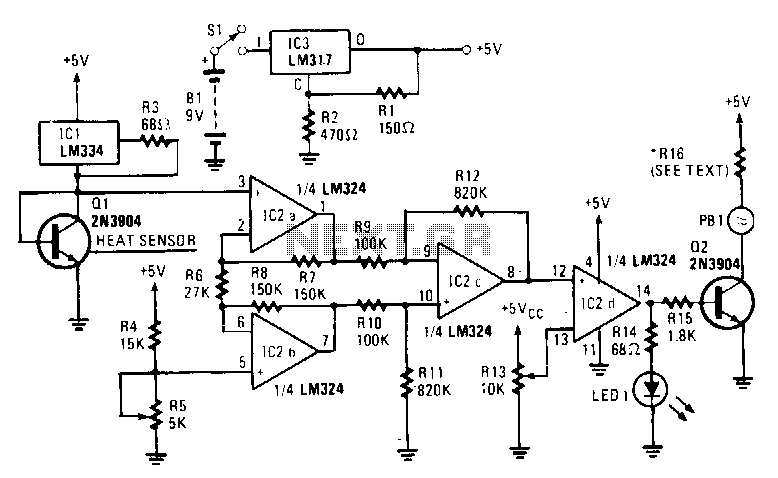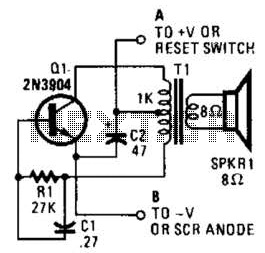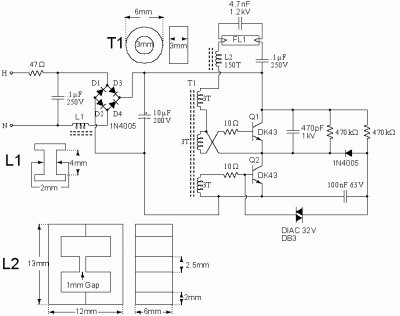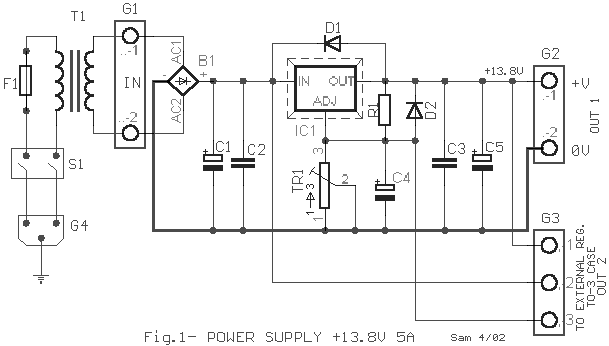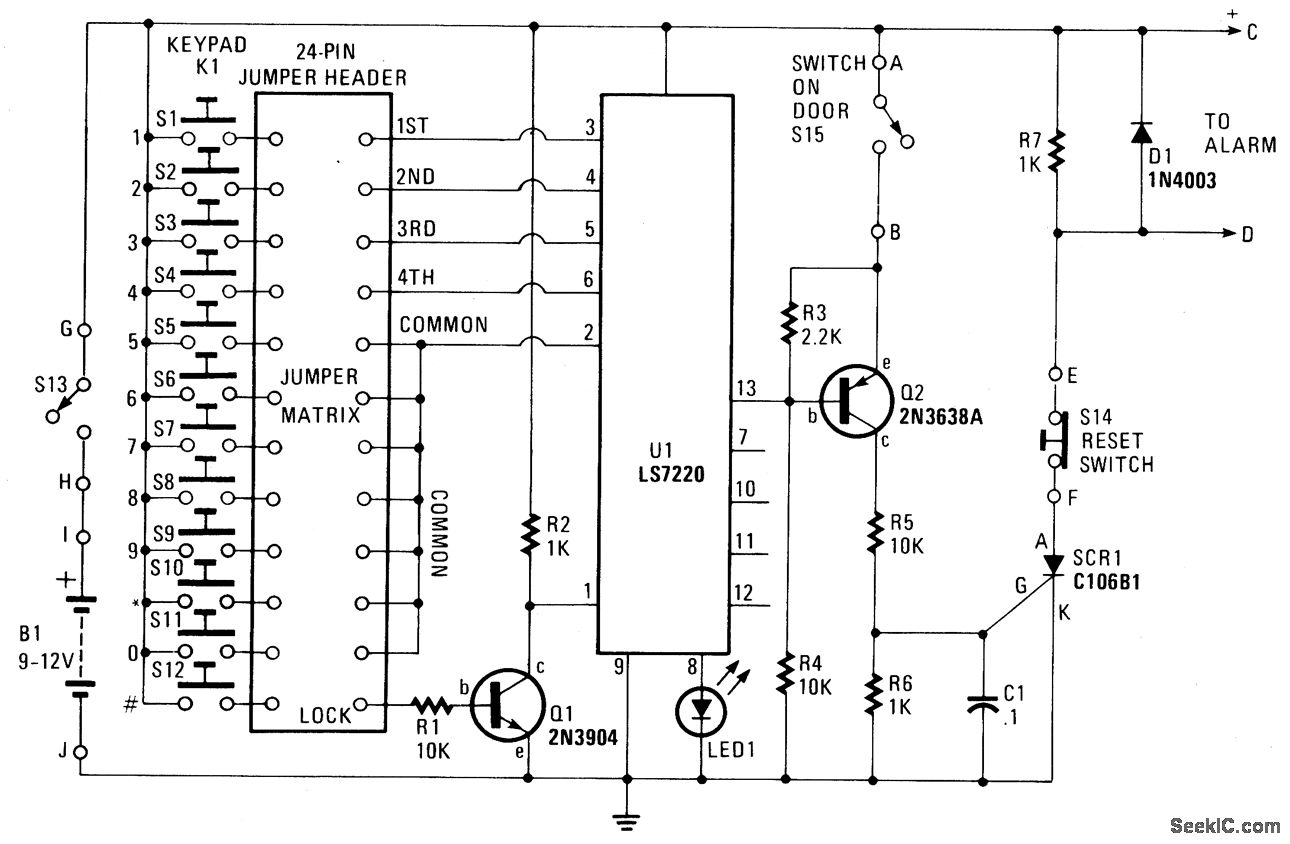
Electronic Metronome Generates Mechanical Sound
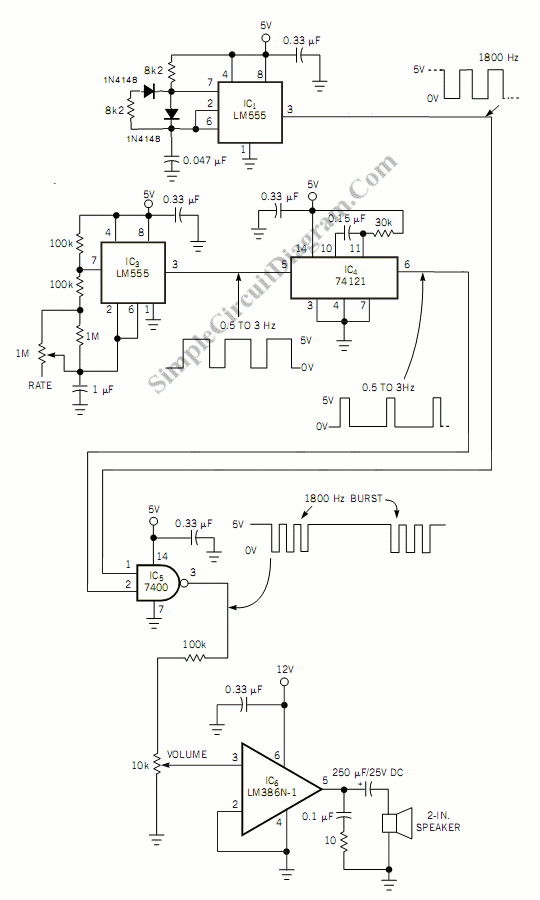
This is a metronome circuit that features a mechanical sound character. A metronome with a mechanical sound character enhances the experience and enjoyment of musical practice.
The metronome circuit is designed to produce rhythmic sounds that assist musicians in maintaining a consistent tempo. The mechanical sound character is typically achieved through the use of a pendulum mechanism or a similar oscillating component that generates audible clicks at regular intervals.
Key components of the metronome circuit may include an oscillator, a control circuit for adjusting the tempo, and a sound-producing element such as a speaker or a mechanical striker. The oscillator generates a square wave signal, which is used to trigger the sound-producing element. The tempo can be adjusted by varying the frequency of the oscillator, allowing the user to set the desired beats per minute (BPM).
The circuit may also incorporate additional features such as visual indicators, like LED lights, that flash in sync with the metronome's beats. This can further aid musicians in keeping time, especially in noisy environments where the audible clicks may be difficult to hear.
In terms of power supply, the metronome circuit can be powered by batteries or an external power source, depending on the design requirements. Compact and portable designs are often preferred, enabling musicians to carry the device easily during practice sessions.
Overall, the mechanical sound character of the metronome circuit not only adds a nostalgic charm but also serves a practical purpose in enhancing musical accuracy and enjoyment.This is a metronome circuit that has mechanical sound character. The metronome that has mechanical sound character will make our life more fun and it would be . 🔗 External reference
The metronome circuit is designed to produce rhythmic sounds that assist musicians in maintaining a consistent tempo. The mechanical sound character is typically achieved through the use of a pendulum mechanism or a similar oscillating component that generates audible clicks at regular intervals.
Key components of the metronome circuit may include an oscillator, a control circuit for adjusting the tempo, and a sound-producing element such as a speaker or a mechanical striker. The oscillator generates a square wave signal, which is used to trigger the sound-producing element. The tempo can be adjusted by varying the frequency of the oscillator, allowing the user to set the desired beats per minute (BPM).
The circuit may also incorporate additional features such as visual indicators, like LED lights, that flash in sync with the metronome's beats. This can further aid musicians in keeping time, especially in noisy environments where the audible clicks may be difficult to hear.
In terms of power supply, the metronome circuit can be powered by batteries or an external power source, depending on the design requirements. Compact and portable designs are often preferred, enabling musicians to carry the device easily during practice sessions.
Overall, the mechanical sound character of the metronome circuit not only adds a nostalgic charm but also serves a practical purpose in enhancing musical accuracy and enjoyment.This is a metronome circuit that has mechanical sound character. The metronome that has mechanical sound character will make our life more fun and it would be . 🔗 External reference
Warning: include(partials/cookie-banner.php): Failed to open stream: Permission denied in /var/www/html/nextgr/view-circuit.php on line 713
Warning: include(): Failed opening 'partials/cookie-banner.php' for inclusion (include_path='.:/usr/share/php') in /var/www/html/nextgr/view-circuit.php on line 713
